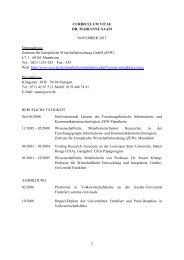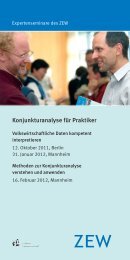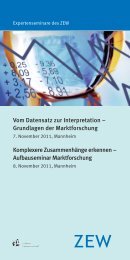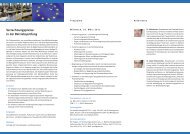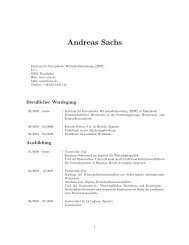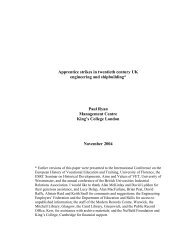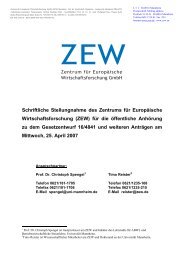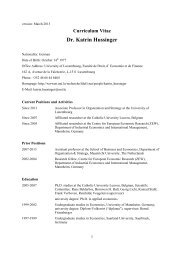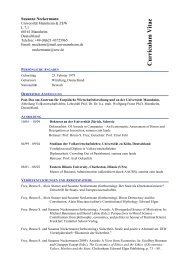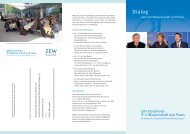Does Alma Mater matter? Evidence from Italy*
Does Alma Mater matter? Evidence from Italy*
Does Alma Mater matter? Evidence from Italy*
You also want an ePaper? Increase the reach of your titles
YUMPU automatically turns print PDFs into web optimized ePapers that Google loves.
<strong>Evidence</strong> that the effects of college quality of earnings and employment<br />
probabilities wane over labour market careers is discussed by Warren, Hauser<br />
and Sheridan, 2002, and Brand and Halaby, 2003, for the US. Employers use<br />
credentials, including college quality, as a signal of skills at labour market<br />
entry, but as individuals age this signal loses importance relative to other<br />
sources of information, such as direct screening. Since mobility is triggered by<br />
expected differences in lifetime earnings profiles, university – specific<br />
temporary differences may be not sufficient to reallocate enrolment <strong>from</strong> the<br />
South to the North in the presence of cost differentials. In a way, the low<br />
mobility shown by Table 4 could simply be telling us that the internal rate of<br />
return to going to a Northern or a Southern college is not very different, once<br />
the entire profile of lifetime earnings is properly considered.<br />
Support for this alternative explanation comes <strong>from</strong> the 2002 wave of the<br />
Survey on the Income and Wealth of Italian Households (SHIW), carried out by<br />
the Bank of Italy, which includes information on the college of graduation. The<br />
sample of graduates is much smaller than the one we are using in this paper,<br />
but has the advantage of covering individuals of different age rather than only<br />
labour market entrants. We define a dummy for the young – aged <strong>from</strong> 25 to<br />
34 – and for the adult – aged <strong>from</strong> 35 to 55, and regress both monthly<br />
earnings and employment probabilities on individual controls, area of<br />
residence, field of study dummies and age dummies. We also interact both age<br />
group dummy with a dummy equal to 1 if the college of graduation was<br />
located in the North and to zero otherwise. Our key results are presented in<br />
Table 7.<br />
They show that monthly earnings do not differ in a significant way with<br />
the area where the college of graduation was located. Employment<br />
probabilities, however, differ, because the young age group <strong>from</strong> Northern<br />
colleges enjoys a significantly higher probability of employment. More<br />
importantly for our purpose, however, is the finding that this relative<br />
advantage disappears among adults.<br />
Table 7. Monthly wages and employment probabilities , by age group and<br />
region where the college is located. Weighted least squares<br />
21




